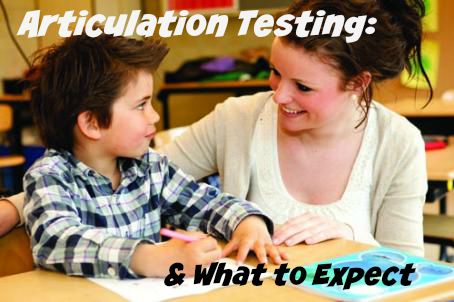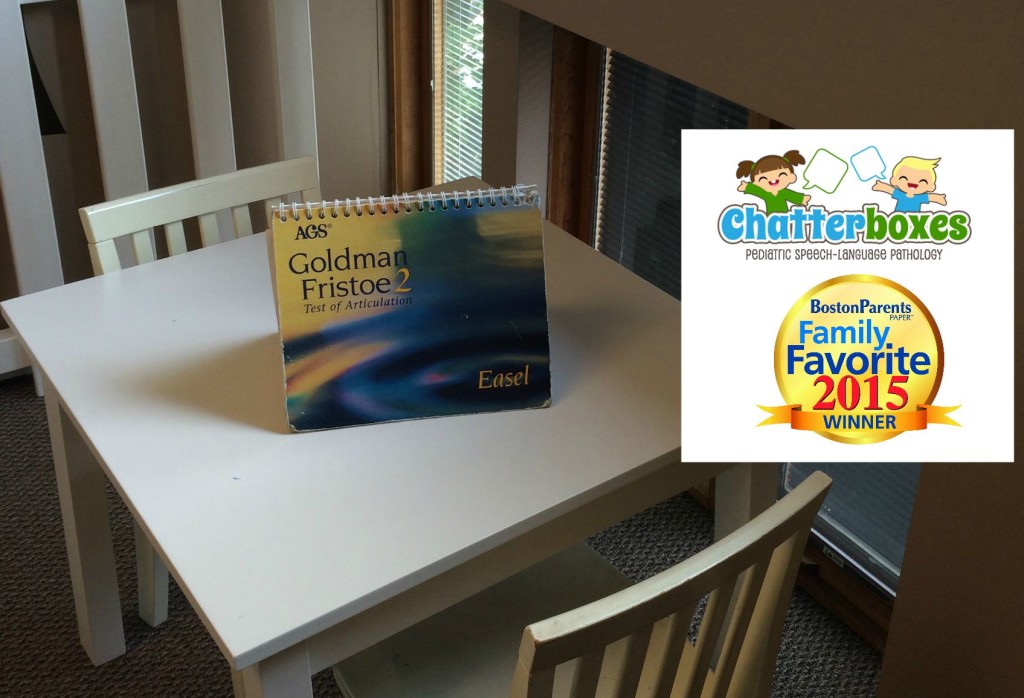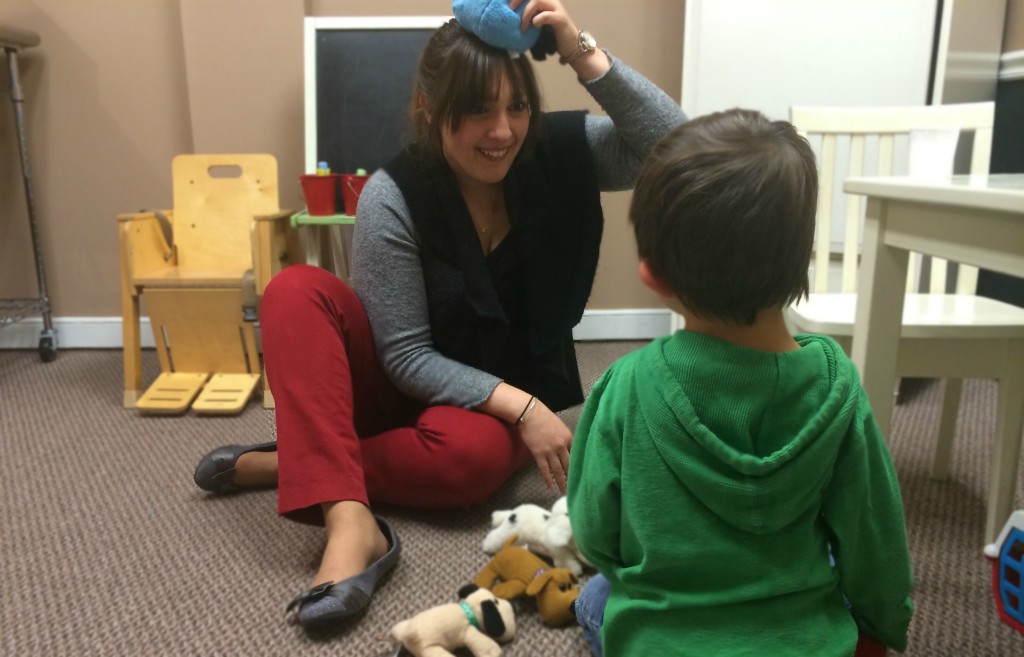The process of testing of any kind can be nerve-racking, especially when you have concerns about your child’s development. Knowing what to expect can help ease your worries and in turn, you can help your child understand and be prepared for the testing process.
If you have concerns regarding your child’s speech/articulation skills (i.e. the way in which he pronounces words, sounds, phrases and sentences), it is likely your child’s therapist will select the Goldman Fristoe Test of Articulation, or (GFTA-2). Here’s a more in-depth look at the GFTA-2:
The Goldman-Fristoe Test of Articulation- Second Edition (GFTA-2):
The GFTA provides a wide range of information by sampling both spontaneous and imitative sound production. This includes single words and conversational speech. Descriptive information about the individual’s articulation skills is obtained through three sections of the GFTA-2, which include: Sounds-in-Words, Sounds-in-Sentences, and Stimulability.
Sounds-in-Words uses 34 picture plates and 53 target words to elicit the articulation of 61 consonant sounds in the initial, medial, and/or final position, as well as 16 consonant blends (groups of two or three consonants in words that makes a distinct consonant sound, such as “bl”) in the initial position.
Sounds-in-Sentences provides a semi-structured observation of the individual’s spontaneous sound production used in connected speech by asking him/her to retell one or two simple, picture-based stories that the speech-language pathologist has previously read aloud.
Stimulability can be used to assess the individual’s ability to correctly produce a previously misarticulated sound when asked to watch and listen to the examiner’s production of the sound.
This test can provide a record of growth in articulation skills across a broad time span. The wide range allows tracking articulation skills from preschool through primary and secondary school years and into young adulthood with the same instrument.
A significant milestone in the normal language development of very young children is their ability to produce at appropriate ages the various consonant sounds. When screening preschool children, speech-language pathologists use the first level of testing and the colorful, appealing pictures of Sounds-in-Words. This gives the speech-language pathologist the ability to screen very young children for possible delays in the development of articulation skills.
The GFTA-2 also has the ability to screen for expressive language difficulties. The individual must retell the stories in the Sounds-in-Sentences section in their own words. During the duration of this task, the speech pathologist may become aware of deviations in an examinee’s vocabulary and syntax (structure of sentences) that indicate the need for an evaluation of language as well as articulation.
How to Prepare Your Child for Articulation Testing:
You can explain to your child that he will be asked to take a look at some pictures in a book of some very common objects (cup, girl, duck, etc). He will be asked to label these pictures, and may have to say the word a few times.
From there, (if age appropriate) he will be told a few short stories with pictures. He will be asked to retell the stories using the picture cues. The first story is about a little boy having a bad-day; and the second story is about a boy and girl who go fishing.
Finally, he may be asked to complete stimulability testing, whereas the therapist will model specific sounds and sound combinations to learn if your child can produce particular sounds with direct instruction.
The Chatterboxes Way:
At Chatterboxes, we feel an important piece of testing is to collect a Spontaneous Speech/Language Sample during play. That said, your child will be engaged with age-appropriate toys/materials either before or after the standardized testing described above. We feel the collection of this spontaneous speech & language sample should be analyzed and considered alongside of testing results in order to obtain a comprehensive clinical impression of the child’s articulation skills.
A typical evaluation may last 45 minutes, and parents may choose if they would prefer to be present in the room with their child, or wait in the waiting room. Following the testing, you will receive our initial clinical impressions as to their child’s articulation skills.
A comprehensive written report with specific sound errors and goals and strategies is shared with you 10 days following the evaluation. Your child’s therapist will then contact you to discuss the report, review the recommendations and answer your questions via scheduled phone conference. If therapy is indicated, and you would like to pursue services with our practice, visits can be scheduled at this time.
For more information, or to discuss your child’s articulation abilities, please contact Heather at anytime via email at Heather@teamchatterboxes.com or call our Newton Centre location at 617-969-8255.






